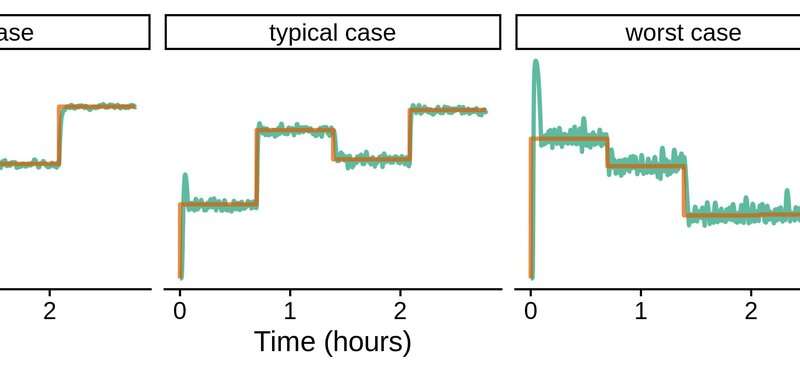Using deep learning to control the unconsciousness level of patients in an anest
Source: Ingrid Fadelli
 Target level of unconsciousness and observed level of unconsciousness for the best, median, and worst-case testing simulations. Credit: Schamberg, Badgeley & Brown.
Target level of unconsciousness and observed level of unconsciousness for the best, median, and worst-case testing simulations. Credit: Schamberg, Badgeley & Brown.
In recent years, researchers have been developing machine learning algorithms for an increasingly wide range of purposes. This includes algorithms that can be applied in healthcare settings, for instance helping clinicians to diagnose specific diseases or neuropsychiatric disorders or monitor the health of patients over time.
Researchers at Massachusetts Institute of Technology (MIT) and Massachusetts General Hospital have recently carried out a study investigating the possibility of using deep reinforcement learning to control the levels of unconsciousness of patients who require anesthesia for a medical procedure. Their paper, set to be published in the proceedings of the 2020 International Conference on Artificial Intelligence in Medicine, was voted the best paper presented at the conference.
"Our lab has made significant progress in understanding how anesthetic medications affect neural activity and now has a multidisciplinary team studying how to accurately determine anesthetic doses from neural recordings," Gabriel Schamberg, one of the researchers who carried out the study, told TechXplore. "In our recent study, we trained a neural network using the cross-entropy method, by repeatedly letting it run on simulated patients and encouraging actions that led to good outcomes."
Essentially, Schamberg and his colleagues developed a deep neural network and trained it to control anesthetic dosing using reinforcement learning within a simulated environment. They specifically focused on the dosage of Propofol, a medication that decreases people's level of consciousness and is commonly used to perform general anesthesia or sedation on patients who are undergoing medical procedures.
The researchers trained the neural network they developed on simulated patient data, which was generated based on pharmacokinetic/pharmacodynamic models with randomized parameters. This ultimately allowed them to account for numerous patients with varying characteristics and features.
Block diagram representation of the proposed paradigm. The agent observes a level of unconsciousness and makes selects an appropriate drug dosage using a neural network. The environment represents a simulated patient. Credit: Schamberg, Badgeley & Brown.
They ran a series of training trials, using what is known as the 'cross-entropy' method. During these trials, the neural network gradually learned to map an observed anesthetic state to a probability of infusing a fixed Propofol dosage.
When they evaluated their model's performance, the researchers applied a deterministic policy that transforms the probability of infusing a fixed Propofol dosage into a continuous infusion rate. Overall, their neural network achieved remarkable results, outperforming a proportional-integral-derivative (PID) controller, which has previously been used to determine ideal doses of anesthesia.
"The two primary advantages of our approach are its ability to scale the clinical variables included in the observation and the deep network's continuous relationship between the input variables and the recommended dosage," Schamberg said. "Deep neural networks allow us to make a model with many continuous input data, so our method generated more coherent control policies than prior table-based policies."
In the future, the deep neural network-based model devised by this team of researchers could assist anesthesiologists in identifying the ideal dosage of Propofol for individual patients and achieve different levels of unconsciousness. Nonetheless, the model has so far only been tested in simulations, so before it can be applied in real-world settings it will need to undergo a series of clinical trials with real patients.
"So far, our approach outperformed the commonly used proportional-integral-derivative controller and was robust across a variety of patient variations in drug metabolism and effect," Schamberg said. "We would now love to test the proposed paradigm on humans in controlled clinical settings."
| }
|